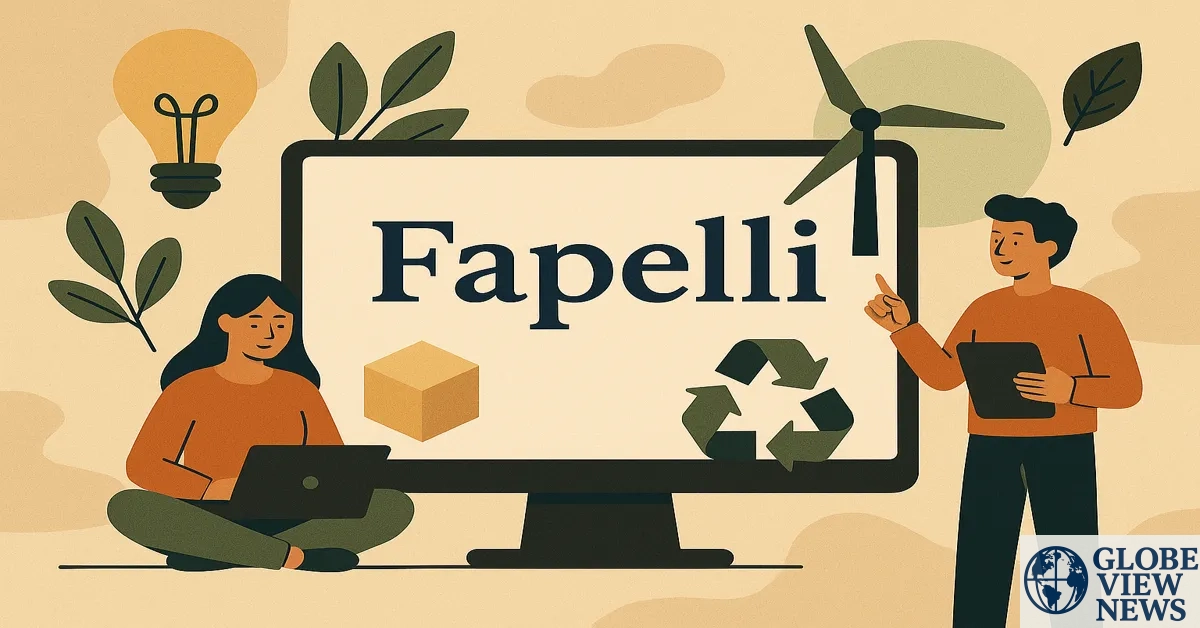In the ever-expanding lexicon of internet culture, certain terms emerge with little fanfare yet go on to command interest, speculation, and creativity. One such term is fapellk—a word that, at first glance, may appear obscure or invented, yet carries with it a deeper story formed by the communities, contexts, and digital environments in which it exists. Whether used as a username, a brand identity, a meme fragment, or part of an abstract artistic expression, fapellk has garnered curiosity and occasional analysis across forums, social platforms, and creative spaces.
The nature of digital culture is such that names and phrases can attain symbolic significance beyond their literal form. Fapellk is no exception. Its meaning is not fixed, and its use is not limited to a single community or purpose. Instead, it serves as a conceptual anchor—inviting interpretation, evoking mystery, and functioning as a canvas for projection.
This article explores fapellk not just as a term, but as a phenomenon. We’ll examine its usage, potential origins, symbolic weight, and the communities that have incorporated it into their digital language. In doing so, we’ll uncover how something as simple as a unique word can reflect broader themes of identity, anonymity, creativity, and connection in the digital age.
Fapellk did not begin with a trending hashtag or viral post. Unlike many online terms that are tied to a specific moment or cultural reference, it appears to have materialized gradually—perhaps from a username, or possibly as a pseudonym in creative or fan communities. This organic, decentralized emergence has only added to its allure.
Because fapellk has no immediate definition or associated backstory, it acts as a kind of digital cipher. Its undefined nature offers freedom of interpretation. One user may view it as an avatar of anonymity, while another may see it as a handle representing a fictional entity or alter ego. In an internet landscape where naming often ties back to branding or identity politics, it resists easy categorization.
And it is this ambiguity that makes it powerful. The digital world thrives on both clear signals and coded language. Where clarity drives accessibility, ambiguity cultivates subcultural resonance. Fapellk stands at that intersection, capable of being adapted, co-opted, or reimagined by those who encounter it.
Many online creators and users have adopted terms like it as their digital persona, using it across platforms from Reddit to GitHub to Discord. The name itself becomes the identity—a mask that allows full expression without tying it back to real-world details. This is especially relevant in an era where anonymity is both a right and a strategy.
Fapellk may represent more than just a name; it can symbolize resistance to commodified identity. As corporations push for real-name policies and biometric verification, users increasingly value the creative, even nonsensical, identities they construct for themselves. A handle like its signals uniqueness without explanation—a quiet rebellion against conformity.
In visual art and design communities, usernames like fapellk often become brands in their own right. They are tied to stylistic signatures, thematic aesthetics, or types of content—sometimes known only to niche audiences, but influential within those circles. By refusing to conform to expectations or trends, such names gain cultural capital over time.
Across platforms, it has appeared in various forms—sometimes as a user alias, other times embedded within digital artwork, conceptual fiction, or even glitchy soundscapes. These appearances aren’t tied to a centralized campaign or definition. Rather, they reflect how decentralized internet communities co-create meaning.
For example, in coding forums, usernames like it often signify someone experimenting with projects outside mainstream visibility—scripts, indie games, open-source art tools. In this context, the name becomes associated with creative tinkering and digital craftsmanship.
On the other hand, it may appear in digital poetry, vaporwave-inspired art, or surrealist meme spaces—places where meaning is intentionally fragmented or layered. Here, it works like a brushstroke: not necessarily meant to be understood, but felt, invoked, and played with.
This multiplicity of uses adds dimension to the word. Fapellk is not a fixed signifier. Its significance is derived from where and how it is used. In one thread, it might mean whimsical detachment. In another, a deliberate stylistic choice. In yet another, a cipher for an inside joke.
The digital community becomes the interpreter—and each use creates new ripples of meaning.
Phonetically, it has a curious composition. It doesn’t belong to any known language, yet it carries a rhythm and structure that feels intentional. The hard consonants and abrupt ending give it a kind of bite, while the repeated vowels in the middle soften its tone. These qualities make it attractive for digital use—memorable, yet elusive.
In a world where searchability is essential, having a unique, unclaimed term like it is an advantage. It is Google-friendly in the sense that results are minimal and specific, allowing any content associated with it to be quickly found by those in the know. This rarity gives it a kind of digital exclusivity.
Moreover, the term’s visual balance—six characters, symmetrical feel—also plays a role in its appeal. It works well as a tag, a signature, or a logo. In a visual economy dominated by branding cues, these subtle aesthetic features matter. They help a term like it gain staying power, especially among designers and creators.
The act of naming carries psychological significance. Online, where identity is both mutable and performative, a name like it allows for experimentation and reinvention. It doesn’t lock the user into a specific cultural or ideological framework. Instead, it functions as a platform for building something entirely new.
This freedom is part of why such terms take root in digital spaces. They offer blank slates. Users can attach their own meanings, narratives, and personas to them without concern for preexisting associations. And because it doesn’t carry baggage, it’s open to evolution.
As users build reputation under this handle—whether by publishing software, curating playlists, creating NFTs, or moderating forums—the term begins to carry weight. It becomes synonymous with action and expression. Over time, it may even spawn derivative uses: trunames, visual motifs, collaborative projects.
Naming is no longer just about identification. It’s about signaling membership, creativity, and values. And in this sense, it is a perfect vessel for 21st-century digital selfhood.
Will it grow into a recognizable digital brand? Will it remain an obscure but meaningful artifact of early 2020s internet culture? Or will it vanish entirely, leaving behind only a few scattered traces? The answer likely depends on the communities who continue to use and interpret it.
One possible future sees it becoming a pseudonymous figure in the creator economy—a curator, coder, or commentator with a cult following. Another scenario imagines fapellk as a conceptual art piece: an identity passed from user to user, each adding to its legacy. Or perhaps it becomes an online myth—a name that appears in footnotes, digital graffiti, or cryptic repositories, with its origin forever uncertain.
In any case, the name stands as a testament to the richness of internet culture. It reflects how words acquire meaning not through definition, but through use—through shared context, repetition, and reinterpretation.
In a time where online life often feels over-commercialized and over-explained, it offers something refreshing: a sense of play, mystery, and possibility.
Fapellk is more than just a curious string of letters. It represents the ways in which modern digital users construct meaning, build identity, and form community. It is a linguistic artifact born from ambiguity and embraced for its openness. Whether seen as a username, a brand, an art concept, or a collective symbol, fapellk continues to resonate because it refuses to be pinned down.
Its journey is not dictated by SEO metrics, corporate interests, or social algorithms. Instead, it moves with the people who use it, the platforms it appears on, and the stories it helps to tell. And in that fluidity lies its lasting appeal.
As digital culture continues to evolve, fapellk remains a small but significant reminder that names still matter—that they can shape not only how others see us, but how we see ourselves.

